The present culture news section is but a summarized selection of last year's cultural life, exceptionally emphasizing the activities organized and sponsored by the ICM - the main instituion (together with the 'Leal Senado') for he coordination and promotion of cultural actions in Macau.
Cultural Action Department
The Cultural Action Department, the first with an organized body within the ICM, has carried out during 1986 a vast and varied program of cultural offer in the areas of Theatre and Dance, Cinema and Music, the Commemoration of relevant dates and facts and eminent characters within the national and the Macanese cultural picture. The vastness of that program justifies both the selection of the most relevant actions and the news--imparting, laconic style we shall be using.
THEATRE
JANUARY
Performance of the play 'Pinnochio' by the Canton Puppets Troupe ('Cineteatro Macau').
FEBRUARY
'Wang Leng' Puppet Troupe (Macau, Taipa and Coloane) Group of Canton Acrobats ('Forum de Macau') Amateur Theatre Groups of Macau ('Teatro D. Pedro V').
MARCH
Performances by the Amateur Theatre Groups of Macau (Taipa and Coloane) Professor António Manuel Couto Viana begins his work in Macau.
MAY
8 theatre performances for children by the Hong Kong 'Chung Ying' Group, in Cantonese (the sports-ground of the old Grammar -school). 2 performances of the play "I am Hong Kong" by the 'Chung Ying' Group ('Teatro D. Pedro V').
JUNE
3 theatre performances (within the program for the commemoration of the 10th June) of the plays "Camões e o Jau" and "Um Gil... um Gil... um Gil...," with production, wardrobe and mise-en-scène by António Manuel Couto Viana. ('Teatro D. Pedro V').
DECEMBER
3 theatre performances for children with the plays "Era uma vez... um Dragão", "Auto das três costureiras" and "Natal na Rua" (Production, wardrobe and mise-en-scène by António Manuel Couto Viana).
RELEVANT DATES
FEBRUARY
Chinese New Year festivities
APRIL
Commemoration of the 60th anniversary of the death of Camilo Pessanha:
* Lecture 'Encontro com a poesia de Camilo Pessanha' *'Semana do Livro' * Bibliographic Exhibition * Film: 'O poeta e o exílio'.
MAY
Commemoration of the 15th anniversary of the death of Luís Gonzaga Gomes:
* Bibliographic Exhibition * Lecture * Publication and introduction of the Book "Chinesices" by Luís Gonzaga Gomes * 'Semana do Livro'.
JUNE
Commemorations of the 10th June
DECEMBER
Commemoration of the Centenary of the death of Cesário Verde:
* 'Semana do Livro'* Lecture:
'Cesário Verde num relâmpago' by Prof. Couto Viana and poems read by prof. Amílcar Martins.
CINEMA
FEBRUARY
Chinese films: 'Amantes de Televisão' (TV Lovers), 'Vagabundo do San Mao' (San Mao Tramp), and 'Pequenos Heróis' (Little Heroes). (Taipa and Coloane).
APRIL
Film: 'O Poeta e o Exílio' - within the commemorations of the 60th anniversary of the death of Camilo Pessanha ('Centro de Difusão Cultural'). Japanese cinema cycle ('Centro Cultural Sir Robert Ho Tung').
MAY
Two films by Miguel Spiguel:
'Macau' and 'Macau, Jóia do Oriente' ('Centro de Difusão Cultural').
JULY
Portuguese cinema cycle with films of the 'Cinemateca Portuguesa' ('Centro de Difusão Cultural').
JULY
French cinema cycle ('Teatro D. Pedro V').
OCTOBER
Austrian cinema cycle ('Teatro D. Pedro V').
MUSIC AND DANCE
JANUARY
23rd
Piano recital by Luong Kim Yin ('Centro Cultural Sir Robert Ho Tung') 80 people.
26th
Concert by the 'Orquestra de Câmara de Macau' (Hotel Hyatt Regency) 300 people.
FEBRUARY
Chinese New Year Festival
2nd and 3rd
Performance by the Canton Group of Music and Dance ('Cineteatro de Macau') 700 people.
6th
Chinese Opera by the Four Pagoda Group ('Colégio do Sagrado Coração de Maria' - Coloane) 70 people.
MARCH
1st
Bassoon and Piano recital by Martin Gatt and Margarett Lynn ('Centro Cultural Sir Robert Ho Tung') 80 people.
22nd
Concert by the Tubingen Chamber Orchestra ('Universidade da Asia Oriental') 500 people.
30th
Concert by some elements of the 'Orquestra de Câmara de Macau' ('Centro Cultural Sir Robert Ho Tung') 70 people.
APRIL
12th and 13th
Course for Music teachers by prof. David Gwilt.
27th
Concert by the 'Orquestra de Câmara de Macau' (Hotel Hyatt Regency) 300 people.
MAY
25th
Concert by the 'Orquestra de Câmara de Macau' (Hotel Hyatt Regency) performance for children (500 people).
31st
The 4th Music Festival for the Youth ('Centro Cultural Sir Robert Ho Tung') 144 participants.
JUNE
1st
The 4th Music Festival for the Youth (Cont.) ('Centro Cultural Sir Robert Ho Tung').
7th
Prize delivery to the winners of the 4th Music Festival for the Youth ('Centro Cultural Sir Robert Ho Tung') 120 people.
Welcome session dedicated to His Excellency the Governor of Macau and to Goverment members ('Centro Cultural Sir Robert Ho Tung').
11th
Performance by the Malacca folk dance group ('Largo do Leal Senado', public performance).
12th
'Arraial de S. to António' (Portuguese popular festivity): 'Tuna Macaense', Macau folk dance group, folk music group 'Caninha Verde' the Malacca folk dance group. ('Clube Militar).
28th and 29th
Performance by the ICM Ballet Group ('Teatro D. Pedro V'). Production and choreography by prof. Helena Jardim. 600 people.
29th
Concert by the 'Orquestra de Câmara de Macau' (Hotel Hyatt) 350 people.
JULY
8th
Piano recital by Leung Hio-Ming ('Centro Cultural Sir Robert Ho Tung') 130 people.
19th
Recital by the students attending the Chinese Instruments Course ('Centro Cultural Sir Robert Ho Tung') 50 people.
27th
Concert by the 'Orquestra de Câmara de Macau' (Hotel Hyatt) 400 people.
SEPTEMBER
8th
The Peking Philarmonic Orchestra ('Forum de Macau') 300 people.
28th
Opening of the 2nd season of the 'Orquestra de Câmara de Macau' (Hotel Hyatt) 400 people.
OCTOBER
Chinese Musical Instruments Course (81 students.)
26th
Concert by the 'Orquestra de Câmara de Macau' (Hotel Hyatt) 300 people.
5th
Piano recital by Sequeira Costa ('Universidade da Asia Oriental') 700 people.
30th
Concert by the 'Orquestra de Câmara de Macau' (Hotel Hyatt) 440 people.
DECEMBER
8th
Piano and Singing recital by Nuno Almeida and Marina Ferreira ('Centro Cultural Sir Robert Ho Tung') 45 people.
18th
Harpsichord recital by Cremilde Rose Fernandes ('Igreja de S. Lourenço').
21st
Organ recital by G. Doderer ('Sé Catedral').
28th
New Year Concert by the 'Orquestra de Câmara de Macau' (Hotel Hyatt)
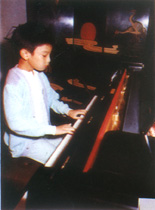 The 4th Music Festival for the Youth
The 4th Music Festival for the Youth
Cultural Heritage Department
The activity of the Cultural Heritage Department is divided into several fields of action with the same basic fundaments. The three sectors are, in short, studies and information, recuperation works, and public awareness. Those activities are simultaneously put in motion, although circumstancial conditions may sometimes impose the supremacy of one of them in relation to the others.
The idea that the preservation of the memories of the past is important both for the present and for the future of the cities and of their inhabitants is scarcely perceived by the general population of Macau.
In an attempt to fill that gap, the Heritage Department has included in its program of activities the divulgation of the history of Macau's architecture and urbanism in its most meaningful statements.
During 1986, and following that same line, three exhibitions were organized - Architectonic Heritage of Macau, Three years in the Life of the ICM, and Contemporary Architecture in Macau..
The Department also issued a set of picture postcards with drawings depicting historical monuments of Macau and two cardboard models of buildings of patrimonial value.
In the field of studies and information, more than one hundred projects were analysed and informed, the activity of the team preparing the 'Plano Director do Território' (the Territory's Guiding Plan) was actively followed, and the Department was also represented in the team who accompanied the candidature of Macau to the UNESCO list of the World's Patrimony.
Studies and Research Department
Music
During the year 1986, the survey of infra-structures was equated and the human resources necessary to the methodic organization of music courses began to be ensured, having in view its subsequent integration in a 'school of music', the organization of which is at present under the responsability of Prof. Simão Barreto.
The following courses took place:
- Chinese instruments
- Harpsichord
- Barroque Music, by Prof. Gerhard Doderer.
Theatre
In March 1986, Prof. António Manuel Couto Viana was entrusted with the direction of a Theatre Course, the embryo of a future Theatre Workshop's in Macau, with a permanent character.
The introduction to theatre studies had a simultaneously theoretical and practical character, and coincided with the rehearsal and mise-en-scène of two shows, under the supervision of António Manuel Couto Viana:
Within the commemorations of the 10th Juny:
'Camões e o Jau' (by Casimiro de Abreu)
'Um Gil... um Gil... um Gil' (a selection of texts by Gil Vicente edited by António Manuel Couto Viana)
At Christmas:
3 plays for children
1) 'Era um vez... um dragão'(text by A. M. Couto Viana)
2) 'Auto das três costureiras' (text by A. M. Couto Viana)
3) 'Natal na rua' (text by Esther de Lemos)
Ballet
The first Ballet Course, under the direction of Prof. Helena Jardim, started in the middle of the year with over 100 students aged between five and sixteen.
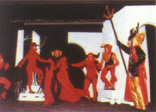 "Um Gil... Um Gil... Um Gil..."
"Um Gil... Um Gil... Um Gil..."
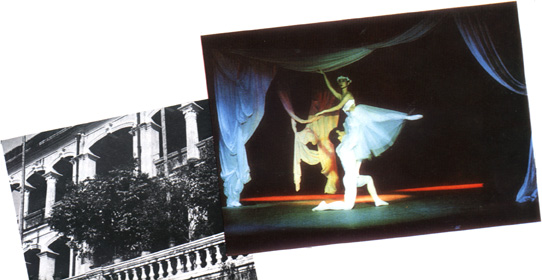 A classical performance by the Ballet group of ICM
A classical performance by the Ballet group of ICM
That was the 'Ballet School' nucleus, a preparatory work for the body of the 'Companhia de Bailado de Macau', already introduced to the public in two performances during 1986.
Academy of the Arts
One of the main activities of the department was the project for an 'Academy' or 'Conservatory of the Arts', an agglutinating body for all the activities developed in the fields of Theatre, Dance, and Music.
Publishing Sector
Having been organized during the last months of 1986, the publishing sector of the ICM has an editorial plan which includes about 70 titles for 1987 and is now being effected.
The following books were published during the year 1986:
Antologia poética de Fernando Pessoa
(a bilingual edition - Portuguese/Chinese- organized by Jin Guo Ping)
Génesis
(by Jorge de Sena, a bilingual edition in Portuguese and Chinese)
Presença portuguesa no Extremo Oriente
(a Portuguese edition of the lectures delivered in Macau within the program of the 27th European Exhibition of Art, Science and Culture)
Novos Territórios
(a original fiction by Jorge Listopad, in Portuguese)
Amor e dedinhos de pé
(an original novel by Henrique de Senna Fernandes and the first Macau novel in Portuguese)
Crónica dos Bons Malandros
(the Chinese version of the same title in Portuguese by Mário Zambujal)
Infraestruturas
(Poems by Estima de Oliveira, in Portuguese)
Macau, Factos e Lendas
(a collection of texts by Luís Gonzaga Gomes, co-edited by the 'Leal Senado')
Chinesices
(by Luís Gonzaga Gomes, a re-edition in collaboration with the 'Leal Senado')
Portugal à beira da estrada
(a photographic album by António Conceição Júnior, with preface by Maria Helena Vale)
'Aljubarrota - sua evocação em Macau'
(a lecture commemorating the battle, by Col. Carlos Gomes Bessa)
The Portuguese Missions in Malacca and Singapore
(by Father Manuel Teixeira, 3 vols., English edition)
Viagens de Verão
(a photographic album, by Francisco Figueira and António Bruno Soares, with text in Portuguese, Chinese, and English)
Coordenadas de Política Cultural
(the structure, objectives, and cultural action lines of the ICM)
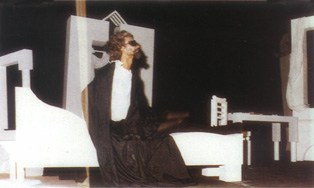 "Camões and the Jau"(June 10, 1986)
"Camões and the Jau"(June 10, 1986)
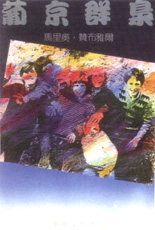 "Chronicle of the good Scoundrels"(Chinese edition)
"Chronicle of the good Scoundrels"(Chinese edition)
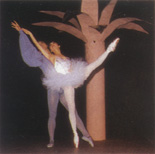 Ballet group of ICM
Ballet group of ICM
Research
1986 iniciatives, now in process:
- Data Bank on Macau Documentation and History, with documents on the Portuguese presence in the East, in general, and specifically on the history of Macau, using microfilm and computerization techniques;
- Granting of a monthly subsidy to the Portuguese missionary in Malacca, Father Manuel Pintado, for his work "Long-term Project" - the localization, compillation and translation into English of Portuguese documents on Malacca;
- Cultural interchange with the 'Instituto Rainha Dona Leonor', for the survey and microfilming of the European and iconographic documents concerning the history of Macau and the Portuguese presence in the Far East;
- Documental interchange with some institutions of the People's Rupublic of China (in study);
- Support granted to private entities for book publication;
Language Courses
- Financial support granted to academic associations of the Territory;
- First contacts for the signature of a collaboration portocol with the 'Academia Portuguesa de História'.
- Organization of a Language Centre (the conditions have been prepared for the practical teaching of Portuguese, Mandarin and Cantonese).
- Portuguese Summer School for university students, both local and foreign, from July to August, with the participation of 33 university graduates and undergraduates from Macau, the People's Republic of China, Malasia, and Hong Kong.
- Organization of the 2nd Summer School.
Craftsmanship
Starting a program for introductory courses on Portuguese and Chinese craftsmanship, an 'Arraiolos Tapestry' course began in 1986, with the participation of 33 people.
The National Library
Public Libraries are multivalent agencies of Information, Education, and Culture, their function being to make the records of human experience accessible in the form of books and other related materials, therefore promoting and facilitating the free circulation of information and ideas.
The 'Biblioteca Nacional de Macau' has had the following main objectives:
1 - Education:
The self-development of the individual/group, irrespective of his level of education, eliminating the barrier between man and knowledge. The 'Biblioteca Nacional de Macau' has fomented the use of its Library as an agent of education, through the following activites:
- Reference service;
- Book-lending service.
The materials for the reference service of the Library have been as follows: books, periodicals, bibliographic indexes, etc. The technical means used to perform the para-educational objective are: staff, catalogues, classification, recuperation systems, information, assistance to readers, information diffusion, photocopy machines, bibliographies, and the ordering of the bibliographic items.
2 - A second main objective has been information, i.e., making exact information available to the individual/ group, quickly and deeply, especially on matters of current interest.
As a secondary objectivce, the Library has tried to complement official school programmes, offering facilities for the carrying out of library projects and granting special book-lending facilities.
3 - The third main objective of the 'Biblioteca Nacional de Macau' has been to try and become one of the chief centres of cultural life, as well as promote a deeper fruition, pleasure, and taste for all the arts.
A secondary objective of that wide cultural aim has been the stimulation and the promotion of cultural extension activities: exhibitions, interviews, specialized bibliographic information, the organization of study and research visits, etc.
Besides that, The 'Biblioteca Nacional de Macau' has been establishing links with cultural and social organizations of the Territory, cooperating with other local administration departments, as well as with voluntary organizations, social welfare, hospital and prison authorities, and assisting readers.
4 - The fourth main objective has been the encouragement to a positive use of leisure and the offer of means for change and relax. That aim was carried out through the offer of general material for the occupation of leisure and the rendering of services for the leisure entertainment of special groups within the community, including external services (for elderly people, invalids, bed-ridden people, etc...).
Those are the main objectives of the 'Biblioteca Nacional de Macau', and they have been fulfilled insofar as the specific physical and social conditions did allow, including also the recent past of the 'Biblioteca Nacional de Macau'.
In 1986, the 'Biblioteca Nacional de Macau' carried out the followinng tasks, only some among the most noteworthy:
- Update and revision of catalogues;
- Collaboration with other public bodies' libraries;
- Record and classification of monographs;
- Visitors guidance and information;
- Collaboration given to:
'Direcção dos Serviços de Educacão, 'Instituto Cultural de Macau', 'Instituto Emissor', 'Teledifusão de Macau', 'Quartel General', as well as other public bodies seeking varied documents.
- Help given to users in their bibliographic research;
- Sectorial bibliographic research;
- Monthly organization and setting up of an exhibition of bibliographic material from the 'Serviço de Depósito Legal';
- Organization and setting-up of bibliographic exhibitions:
1 - The innauguration of the 'Biblioteca Nacional - Secção do Leal Senado' - Exhibition of old bibliographic material;
2 - Exhibition: 'De Portugal ao Extremo-Oriente' on the 10th June;
3 - The '5th October' exhibition;
4 - Photo-bibliographic exhibition on Eca de Queirós;
- Publication of specialized bibliographies on the Portuguese presence in the Far East.
- Setting up of the technical circuits of the 'Biblioteca Nacional, Secção do Leal Senado' (25th March).
- Setting up of the technical circuits of the 'Biblioteca Itinerante' (2nd October).
The Macau Historical Archives
The 'Arquivo de Macau' began operating in 1972, provisionally using the building of the 'Sir Robert Ho Tung' Library, where the organization of its spoils was, for sometime, under the responsability of Father Silva Rego. As an institution, the now called 'Arquivo Histórico de Macau' was subsequently set in the the Avenida do Conselheiro Ferreira de Almeida, inaugurated and opened to the public in March 1982, fulfilling its tasks until it was closed down, in February 1986, to undergo a complete restructuring of the inside, because, on one hand, the Archives needed an adequate site, of an internationally acceptable level, and, on the other, because the climate, together with the white ant, started to very quickly damage and destroy both the building and the material, which would soon be very hard to recuperate at all.
Equipment, documents, and the reduced but dedicated present staff, which includes six elements, were distributed (because it proved difficult to find a common work-place) through the 'Biblioteca Nacional' independently operating in two of its rooms: the Library which is annexed to the Archives and the 'Private Booth section. The 'Boletim' is being elaborated in that same place and it is at present undergoing a restructuring phase so as to be able to render better services to the readers/researchers who are still being attended, both personally and by correspondence. The 'Documental Funds' are identified, classified, and stored away. Among them, the ones concerning 'Civil Administration' is now being analysed and prepared for publication in the 'Boletim'. The Archives' workshop for binding and restauration is now operating at the 'Centro Cultural Sir Robert Ho Tung'.
In the 'Private Booth' Section, which has been used both for research and exhibition purposes, there can be found several documents and publications, some of which rare specimens. The oldest among them date back to the 16th century and they deserve a special mention - the first, edited in 1568, has the title "Nuovi Avisi dell' Indie di Portogallo, recevuti dalli Reverendi Padri della Compagnia di Giesu, tradotti della lingua Spagnuola nell' Italiana...;" the second one dates back to 1589 and its title reads: "Le Historie delle Indie Orientali, del R. P. Giovan Pietro Maffei della Compagnia di Giesu...."
In spite of all, the Archives are well alive and carry out the totality of their normal activities, some of them in collaboration with the 'Biblioteca Nacional'. In the year 1986, there took place in the 'Leal Senado' two exhibitions respectively commemorating the 10th June and the 5th October, as well as a documental exhibition of the Archives, on the occasion of the visit made by the Portuguese Bibliothecary-Archivists. Also in collaboration, the work has begun for the updated, revised edition of 'Bibliografia Macaense', on the basis of the homonym work by the illustrious Macanese Luís Gonzaga Gomes.
With the objective of providing the access to the reading, in the Territory, of the most important documents related to the passing and the permanence of the Portuguese in these Asian lands existent in both national and foreign archives, the 'Arquivo Histórico' keeps a 'Filmotheque', organized with the invaluable collaboration of the 'Arquivo Histórico Ultramarino'.
Despite the limitations imposed by the inexistence of proper 'quarters' and sufficient, qualified staff, the dismembered Archives survive in normal activity, hoping to find themselves completely re-built and exemplary re-equiped during the year 1987.
The transference of all the material is already being programmed, as well as the organization of a proper body of personnel, so as to create an attractive working environment which can stimulate those who work there, make young people feel attracted to research work, and offer adult researchers, besides the Archives' invaluable body of documents, the necessary human and physical conditions for a pleasant and fruitful work.
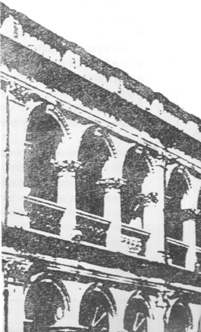
Exhibitions/86
Among the manifestations which marked the notable cultural vitality of Macau, we must emphasize the collection of exhibitions held during 1986.
Limited to those with greater cultural erudition, and in the impossibility of refering so many other interesting ones, RC points out, as examples, some of the 1986 exhibitions.
Two special justifications for two absences.
The exhibition 'Fotobiografia de Eça de Queirós' (a photobiography of Eça de Queirós), organized by Luís Cabral - 'Biblioteca Nacional', would only be satisfactorily published in its complete version, i.e., including its beautiful Catalogue.
The '100 anos de Pintura Portuguesa' exhibition (one hundred years of Portuguese painting), decidedly the most important cultural action in 1986/87, will be given adequate attention in the 2nd issue of RC.
"Macau and the Portuguese presence in the East"
One of the most interesting exhibitions, both for its extent and for its opportunity, was the exhibition 'Macau e a Presença Portuguesa no Oriente' - a historical, documental display of the best selection among the rich collection of documents on Macau of the 'Arquivo Histórico Ultramarino'.
But the approximately hundred and fifty documents (including letters, royal letters, information, memoirs, official letters, pastoral letters, reports, etc.) were worthwhile not only for their implicit scientific and cultural interest, both individually and as far as their attentive thematic articulation was concerned.
In this transit of the Portuguese cultural presence in Macau, the case is not merely one of 'peeping' - with sharpening curiosity and the lenses of a specialist - into History embalmed and kept behind a glass pane.
For nowadays the historical sources which illustrate and clarify the Portuguese presence in the East and identify the entity of Macau acquire an instant opportunity - knowing that the future has its foundations in deepest memory.
The prospection of the Portuguese character in Macau must resort to Memory, the matricial generation of continuity, much more than to intelligence, the contingent materializer of the present.
It is a pity, though, that the exhibition, a fruitful child of the previously establishyed agreement between the 'Serviços de Educação de Macau' and the 'Instituto de Investigação Científica e Tropical' was not presented with more becoming liveliness: the want of elegance of the setting up and the fact that the place chosen was not the most accessible to the common passer-by and potential visitor.
With the absence of well--situated spaces, some of the cultural events in Macau do indeed seem to remain reserved for the pilgrimage of only the most devout initiates.
The large set of iconographic pieces was divided into documental and illustrative series on the presence of Camões in Macau, on religious and military architecture (the latter being of a superior note), on varied Chinese etnography, and on the astronomical sciences in China - a very beautiful set of 18th century xylographic prints belonging to the Observatory of Peking and reporting the decisive contribution given by the Jesuits to Chinese astronomy.
Twenty-five manuscript documents (especially from the 17th and the 18th century) illustrated religious, commercial, educational, and inter--cultural aspects, among which we must not fail to mention those which refer the Portuguese settlement in Macau and also those which prove the constantly good historical relationship between Portugal and China and their credited representatives.
For its descriptive interest, we quote from the catalogtue:
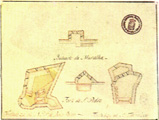
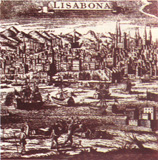
Two exhibitions:
"Macau and the Portuguese presence in the East" (reproduction of the picture of Fortaleza de S. Pedro-S. Peter's Fortress) and the front cover of the catalogue for the exhibition "From Portugal to the Far East".
Relationship between Portugal and China-
The good relationship between Portugal and China was a constant between the two peoples and it was emphasized in five documents the limit dates of which are situated between 1645 and 1754.
- Nothing better to reinforce such relationship than the frequent exchange of delegations and thence the interest of the 'Conselho Ultramarino' (the overseas council) in sending an ambassador to China;
- In the royal letter of the 12th March 1666, Afonso V. King of Portugal, amiably greets the emperor of China on his crowning and reminds him of the good bonds of friendship which had always existed between the two kingdoms;
- The Emperor of China manifests his happiness with the news of the coming of a Portuguese ambassador to Peking, as a reinforcement of the old bonds of friendship between the two countries;
- Another document, dated 1st January 1745, reports that the above-mentioned embassy was very friendly welcomed by the Peking court.
Teaching- In its representation of the 2nd December 1781, the 'Senado da Câmara de Macau' calls the attention of Martinho de Melo e Castro, the State Secretary for the Navy and Overseas Territories, to the need of satisfying the wish manifested by the emperor of China for having a Mathematics and Medicine teacher of Portuguese nationality at his Peking court.
Other old documents - Official letter from Diogo Fernandes Salema de Saldanha (governor of Macau) to Martinho de Mello e Castro, the Minister and Secretary of State for the Navy and Overseas Territories Affairs, informing that the master of Grammar of the 'Colégio de S. Paulo' had been told to look up any references concerning the Portuguese settlement in Macau in the old papers of the College Library. 1776, January 19th, Macau
Official letter - from José dos' Santos Baptista Lima, master of Grammar, to the governor of Macau, letting him know that he had found "hua obra (..)" entitled 'description de l'Empire de la Chine, et de la Tartarie Chinoise', where there is a reference to the donation of Macau to the Portuguese. He further informs that he has seen "hum manuscripto (...) em que estão largas notícias desta cidade que provão muito bem o ser ella do nosso Monarcha, e não terem aqui domínio algum os chinas' (a manuscript (...) where there is ample news of this city and which is a good proof of it belonging to our Monarch and that the Chinese have no power here).'
L. S. C.
The city of Macau has been, all through the years, a place where multiple architectural and urban experiments have been tried, orchestrated by successive generations of current architecture producers who have been, with more or less dramatic intensity, carving the bust of the city.
The Contemporary Architecture Exhibition tried to synthetize, in a display meant for the general public, the high architectural production (that is, produced by qualified architects) of the last decade. And it had the particularity of including all the architects without exception, both those who, during that period, worked in the public sector and those who worked in the private sector of the Territory. As such, it was not a selective exhibition; on the contrary, it was a widely comprehensive one.
The exhibition refers all the architecture produced after the great crisis of '66 - an interrupted calendar in terms of architectural production - to explode in a growing boom in the mid 70's.
The urban scenery has since then developed under isolated impulses - there is as yet no official master plan for the city - architectural gestures choreographed in whatever available urban space, even if only three metres wide and seven metres deep. The city thus becomes a performance, a stage for some concrete glorifications, from little-sweetie-archies to monstruous edifications of falic mimetism. It is obvious that, in the middle of the 'grand performance', the architect is but the 'agent provocateur', since economicist rules, and those of sausage-polititians, are the ones which handle the 'fashion magazines' of the urban curtains. It is precisely upon this broad performance that fragments of architecture, now eloquent, now depressing, have paraded against the white pannels of the curvilineal gallery of the 'Centro do Difusão Cultural/Livraria Portuguesa' for two weeks in the last gregorian page of nineteen-eighty-six.
Carlos Marreiros
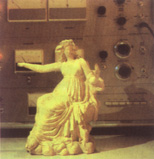
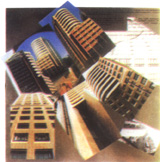
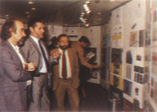
Exhibition on Contemporary Architecture 'The last ten years'
THE NAUTICAL CARTOGRAPHY OF MACAU THROUGH THE YEARS
An old map is always an adventure for the eye, an esthetic pleasure (for it is entertainment painting), and a valuable iconography - containing interesting elements for historical, scientific, and technical interpretation of the epochs and the small universes it presentifies before us.
On all that did the interesting exhibition organized by the 'Serviços de Marinha' (an item in a program of events meant to mark 'Navy Day') and set up in the Exhibition Room of the 'Leal Senado' constitute a documental sequence which enabled the visitor to appreciate the evolution of the nautical cartography of Macau through the years.
The exhibition, which started with old 16th century charts (now especially interesting to historical curiosity) became more and more compact in terms of technical and scientific elements, developing into hydro-graphical plans and plans for the ports of Macau, and concluding with the most recent and clarifying versions of the evolution of the hydric environment, the silting up, the sea-floor shapes and the human works of intervention for the improvement of the traffic gangways.
The exhibition emphasized the importance of nautical cartography for the opening and the intensification of the relationship and communications with the exterior, and documented the most recent hydrographical surveys of the surrounding hydric environment, a task carried out by the 'Serviços de Marinha' in collaboration with their corresponding institutions in the People's Republic of China.
A people of sea-men, the history of our expansion depicts us as forever polarized by the 'telluric quality' of estuaries. Reconnoitrers of coasts, we have endowed the world with one of the greatest contributions to the cartographhical and hydrographical knowledge of the earth.
Its illustration runs from the albums of Fernão Vaz Dourado to the huge collection of hydrographic surveys carried out through laborious research and with scientific rigour during the last decade.
It seems that in this, in the cups of our hands, we have kept the spirit of Discovery. As in Macau, today.
L. S. C.
GRACIETE BATALHA A BIBLIOGRAPHICAL AND DOCUMENTAL EXHIBITION
With the objective of disclosing before the public the totality of the works of Dra. Graciete Batalha, a teacher of great prestige and a researcher of high quality, did the Library of the 'Complexo Escolar de Macau' organize, in June 1986, a Bibliographical and Documental Exhibition exclusively constituted by her works. It was, besides a way of putting into practice a suggestive means for introducing the reader to information about a specific type of documents, an opportunity for paying an homage to a well-known figure in Macau who, since her arrival in 1949, has dedicated her time to education, research, and linguistics. Everyone knows about her activities as a teacher/educator who, after her daily tiring work of teaching, has devoted herself to important studies on linguistic themes, in a contribution to a better knowledge of Macau and its people.
EXHIBITION ON MONSIGNOR MANUEL TEIXEIRA
On the 14th November 1986, a bibliographical exhibition was inaugurated in the Library of the 'Complexo Escolar de Macau' portraying the life and works of Monsignor Manuel Teixeira.
The exhibition was also the background for the introduction of the book Liceu de Macau, by Monsignor Manuel Teixeira, and had the merit of being able to join, in the true sense of the word, the Man and the Work. In fact, those who visited the exhibition could see the works of Monsignor Teixeira, consisting of 115 edited volumes and another 8 in preparation, as well as be in close contact with their Author.
Besides the Bibliographical Exhibition, constituted by Monographs, some copies of periodicals which included various articles by Monsignor Manuel Teixeira and others refering to him, the public could also visit a Photo--Biographical Exhibition displaying photos of Monsignor Manuel Teixeira since his arrival in 1924, aged twelve, to his most recent ones.
We must make a special mention of the Catalogue of the Bibliographical Exhibition, organized by the bibliothecary teacher of the 'Complexo Escolar', which, besides evidencing a good graphic lay-out, includes some biographical references and some notes to the bibliography of Monsignor Manuel Teixeira.
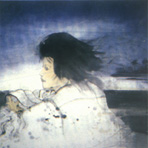
LEAL SENADO
MUSEU LUÍS DE CAMÕES
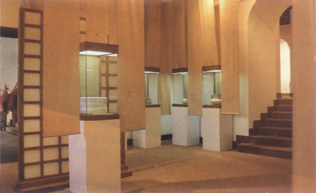
Exhibition of Japanese Art
THE MUSEUM AND THE VISUAL ARTS
The panorama of the Plastic Arts in Macau has been geographically limited and is characterized by an extrordinarily academic praxis, which is, nowadays and by consequence, a repetitious one.
To the academic approach, which can be summarized as a skimming through old prescription books and abilities which have been sistematically repeated and unquestionably accepted for centuries, a didactic and innovative alternative must be offered, in terms of Macau.
All the process of becoming aware of the civilizational and cultural values in culturally-unbalanced societies demands a long and patient effort in order to overcome obstacles and conquer natural resistance. That constitutes an exercise which has to be both subtle and sensible so as to be able to adequately appreciate and mind local specificities.
One knows both through the evidence of facts and by experience that the communities of Macau are suffering from a process of alienation which is the result of a lack of identity before a violent urban change and a consumism which is gradually effacing the collective unconscious.
Macau is not yet a collective project because, in order to become one, it will have to be capable of agglutinating the communities in presence. It is the duty of the Portuguese community to create the conditions for that agglutinating impulse to be launched through a properly organized and properly equipped activity specifically directed towards that objective.
I consider the plastic arts to be an excellent - though not the sole - way to propitiate the birth of such local 'inteligenzia' insofar as plastic awareness demands a previous reflection, a search which leads to individual revolution as far as the artist's relationship with the world is concerned.
That is the objective with which the 'Museu Luís de Camões' has preferably focused on artistic education, through the exhibitions which it has been organizing for 9 years.
The first conquest was the establishment of a program. The 'Museu' then started a selection of local artists who exhibited their works in the museum and now it has the thankless -though correct - task of educating through exhibitions brough from the exterior.
That is why it seems that there have been of late less opportunities for local artists to exhibit their works, but that is a measure intended to demand better quality and to offer exhibition programs of international quality.
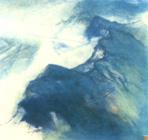
Painting by Chiu Tze Hung
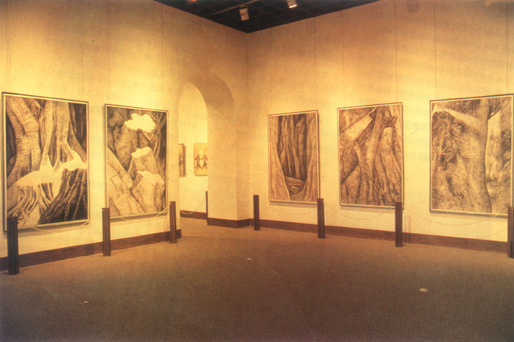
Paintings by Aser But
The quality of the exhibitions organized since 1985, the year when the Gallery of the 'Leal Senado' was opened, should indeed be noted:
Shu Lu Pang, George Chinnery, George Smirnoff, Lao Chin, Lin Yong and Shu Hua, Six Artists from Peking, Luís Demée.
Now, in 1986-1987, an important exhibition never before organized is taking place - it constitutes the historical narration of what the last one hundred years have been in terms of Painting. That panoramic display offers the general public an idea of what Portuguese creativity is.
António Conceição Jr.
EXHIBITIONS ORGANIZED
IN 1986
IN THE 'LEAL SENADO' GALLERY
JAPANESE ART
PHOTOGRAPHIC ASSOCIATIONS
OF CHINA
PAINTING EXHIBITION OF THE
PORTUGUESE-CHINESE
FRIENDSHIP ASSOCIATION
ASER BUT PAINTING
CHUI TZE HUNG PAINTING
LIO KUO SUNG
PHOTOGRAPHS BY JEAN YVES DEFAY
ARCHEOLOGICAL OBJECTS
OFFERED BY THE PEOPLE'S
REPUBLIC OF CHINA TO THE
MUSEUM
PHOTOGRAPHS BY LEONEL
BORRALHO
PAINTINGS OF THE 'SILK ROUTE'
PAINTINGS BY CHANG CHU MENG
AND CHEANG NGA NAM
EXHIBITION COMMEMORATING
THE 30 YEARS OF THE I YÜN
ASSOCIATION
PHOTOGRAPHS OF MACAU - USES
AND WONTS
PAINTING EXHIBITION OF THE
ARTISTS OF MACAU
THE NATURALISTS: COLUMBANO
THE PIONEERS OF MODERNITY
THE FIRST THREE MONTHS OF 1987
Cultural activities of the Instituto Cultural de Macau
- Preparation of a Bill to replace the existing legislation on the Defense of the Cultural, Landscape and Architectonic Heritage ('Despacho n. 2/SAEC/87').
- Analysis of 55 architectural projects for buildings situated in protection areas.
- Beginning of the study of the defining conditions of the 'Ruínas de S. Paulo' protection area.
- Close contact with the progress of the rebuilding works of the 'Centro Cultural Sir Robert Ho Tung' building.
- Project for the adaptation of rooms for a Dance studio.
- Structuring of the paper to be delivered by a delegation of the ICM at the 'I Congresso do Património Construído Luso no Mundo'.
- Preparation of the English and Chinese edition of the book Património Arquitectónico de Macau.
- Support given to the Portuguese Language and Culture lecturers at the Universities of Macau, Kyoto and Peking.
- Grant of research scholarships and support given to ICALP scholarship holders.
- Continuation of the Courses on Chinese Instruments, Ballet, Theatre and Arraiolos Tapestry.
- Publication of the following books in Portuguese/Chinese bilingual editions:
Mário ou Eu próprio - o outro (by Maria Manuela Vale)
Mensagem (Fernando Pessoa)
Chu Kóng (Poems by Maria do Rosário Almeida)
- Organization of the 1st Meeting of Portuguese Language and Culture lecturers at the Universities of the Indic and Pacific area, as well as of their respective Heads of Department, with the participation of the Presidents of the ICALP and the ICM.
- Participation of ICM experts in the following educational activities sponsored by the University of Hong Kong:
a) Seminar on financial control in artistic activities;
b) Course on the restauration and maintenance of Art Pieces.
- Support given to cultural and artistic association: subsidies granted to 'Clube Fringe de Macau', 'Academia de Música S. Pio X' and 'Federação dos Antigos Alunos Salesianos'.
- Promotion of exhibitions and Theatre, Martial Arts and Opera performances by several Chinese cultural associations.
- EXHIBITIONS
'Júlio/Saúl Dias' (painting) 'A Ciência ao Serviços da Arte' (Science at the Service of Art - cientific documents on restauration and recuperation techniques)
- CINEMA
Chinese Cinema Cycle
Brazilian Cinema Cycle
- THEATRE
Performances by the Chung Ying theatre Group (Hong Kong)
- MUSIC AND DANCE
Recital for young Italian musicians Piano recital by Njo Kang Kie Concert by the 'Orquestra de Câmara de Macau'
Concert by the Radio-broadcast Orchestra of the People's Republic of China.
Piano recital by Paulo Santiago Piano recital by Klaus Boner (FRG) Ballet performance by the 'Grupo de bailado do ICM'.
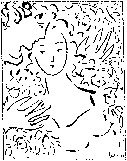
Júlio/Saúl Dias
start p. 89
end p.